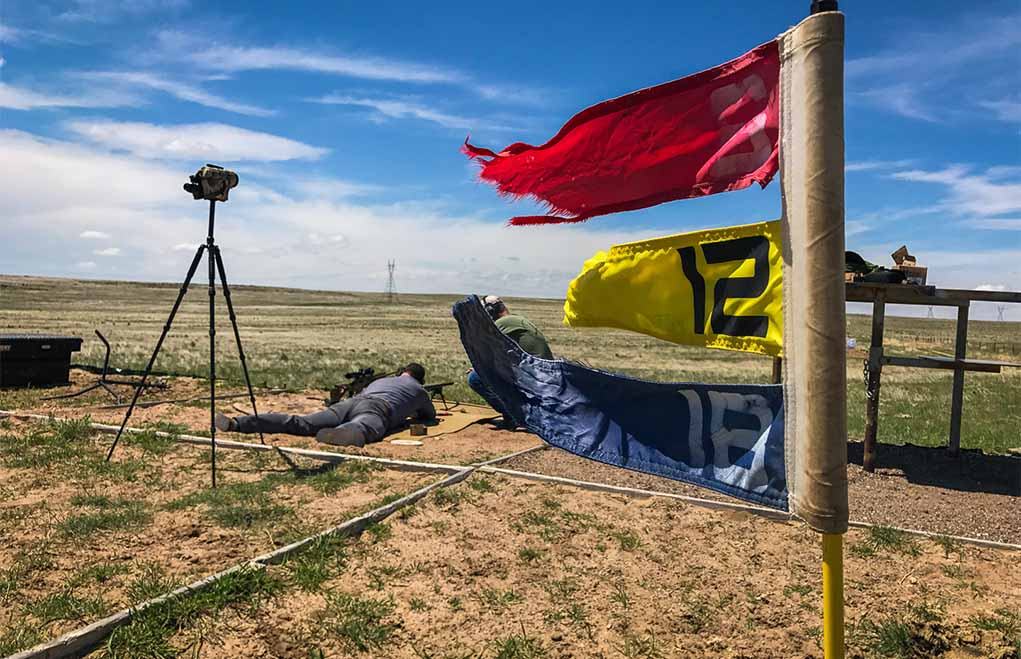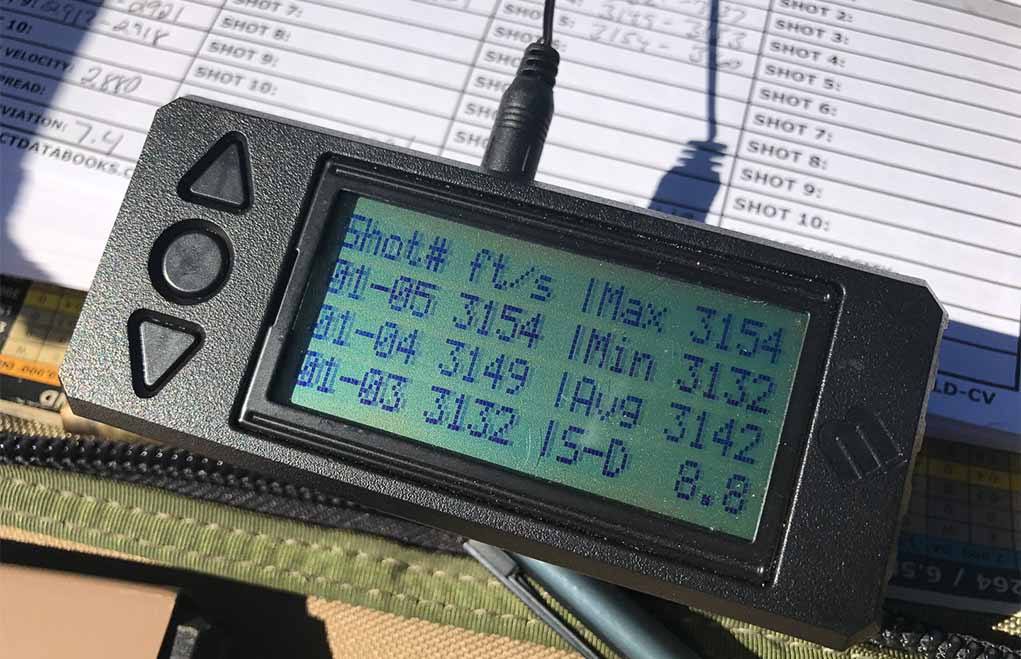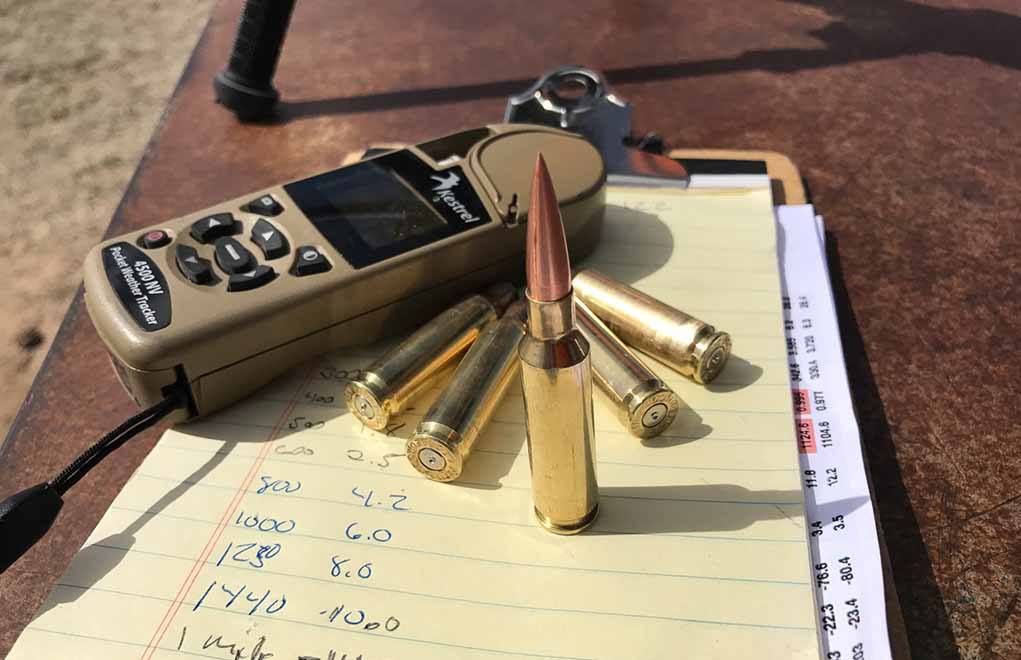

The goal: Dope the wind to within 1 mph across the entire path of the bullet. The key: understanding your bullet's in-fight ballistic coefficient.
What's Important To Know About Ballistic Coefficient:
- It describes how a bullet overcomes air resistance when in flight.
- The higher the ballistic coefficient number, the better the performance.
- A bullet's true BC is dependent on the particular rifle system it's shot from.
- To gauge this performance you need to measure downrange velocity.
The precision rifle shooter’s goal is to dope the wind to within 1 mph across the entire path of the bullet to the target. It’s harder than it sounds. From a practical standpoint, it’s not possible, because the wind rarely cooperates. Nevertheless, this is the ideal we want to achieve.
Take the “wind rose.” It goes back years but has built-in mistakes that many don’t understand — especially doping the wind at a half-value. When someone hears, “Half-value the wind,” they think, I need to halve the value. So, a 10 mph wind coming from a direction described as “half value” would be 5 mph, or 50 percent.

This is wrong; it’s not half the value — it’s half the distance. A half-value wind is 75 percent of the full value, or 7.5 mph; not 5 mph. Incorrectly interpret the information, and you’re starting down the wrong path on your precision rifle journey.
Today, software shooters can gain an advantage by letting software control the wind call (although this is not a great learning method). It can provide effective downrange results … if you set up the computer correctly. Just as with elevation, you have to look at the wind holds and true those results.
Wind Adjustment
Wind adjustment is controlled by the bullet’s ballistic coefficient (BC). This is essential information for setting up your ballistic computer. You can find the BC in several places: Hopefully, your chosen bullet manufacturer printed the numbers on the box; if not, do some internet research to get the correct information.
In short, BC numbers tell the software how well the bullet performs. For instance, it indicates the rate of drop and the amount of drift for a particular bullet. The higher the number, the better the bullet will perform. (It takes a bit of distance for the full effects to kick in, so you should shoot the rifle to distance).
Also, BCs are rifle system-dependent. You have to true the BC for your system, because the value is just an average based on the tests conducted.
Most shooters test their bullets at 300 yards — the shortest range you can use that will give you a fairly good number. However, that number is based on the rifle system it’s shot from; in other words, the barrel that’s used. It’s an average to give the shooter a starting point. It’s not wrong; it’s just not specific.

It’s not easy to correctly change a BC. To do it right, you need a velocity downrange (by “downrange,” I mean 800 yards or more). It will not work close in, so shooting through your chronograph at 800 yards is not going to happen without specialized equipment. You can do it from the drop, or you can use software to adjust it via trial and error.
This last method is the easiest way to do it for the average shooter. Trueing the software by changing muzzle velocity is the default way for most software, but it bends the curve unnaturally.
Chronographs have gotten better, and I most often use the LabRadar and MagnetoSpeed. Their numbers are outstanding, so why begin by changing these measured values? Rather, start off adjusting the BC first and then make minor tweaks to the muzzle velocity if necessary. A host of variables affects the BC, so adjust this number first.

The mph of a rifle is a value based on the bullet shot and derives from the G1 BC. I use G1 BC numbers in most of my software (I don’t subscribe to the idea that you must use G7). Nevertheless, most of the software I run is not G-dependent. The first number in the G1 BC is, in fact, the mph value. Consequently, if I use a bullet with a BC G1 of .583, I have a 5 mph gun. So, for every 5 mph, my bullet will follow this pattern:
| Yards | Mil |
| 100 | 0.1 |
| 200 | 0.2 |
| 300 | 0.3 |
| 400 | 0.4 |
| 500 | 0.5 |
| 600* | 0.6 |
(*Beyond 600 yards, there’s a minor variation in these numbers.)
We always use this method in precision rifle shooting, and we have values for those shooting MOA-based scopes (this is a bit more complicated). For a 10 mph wind, double these values — quick and simple.
When you tweak the software, align the numbers to match the chart on the previous page. So, 500 yards should read 0.5 mil for a 5 mph wind. Mils are preferred over MOA for shooting the wind call because they’re easier to work with.
Methodology
You’re not adjusting the BC as much as you are changing whole numbers. So, your .58 BC is not going to become 0.6, but it might be 0.56 versus the 0.58 printed on the box. That will help align the ballistic curve in your software. It’s a better method than starting off with the muzzle velocity.

Fire a group at 800 yards. Before changing the muzzle velocity to line up the curve, adjust the BC numbers just a bit. Get the curve to match at this distance. If you notice any errors in the short-range data, change the muzzle velocity to line it up and complete the curve. Most likely, it will be a small change — about 25 to 50 fps, but not much more. Changing the verified muzzle velocity beyond 100 fps risks some potential errors. Eight hundred yards is the simplest distance to adjust your software so that it trues the curve from 100 to 1,000 yards.
Finally, BCs are manipulated by velocity. The more speed, the higher the BC number. So, if you’re shooting a cartridge designed around 2,800 fps, and your rifle system is shooting only that bullet at 2,650, it’s not going to have the “advertised” BC. It will become a lower number.
Understanding this will help you adjust the value. Observe how your velocity changes the BC value. Then, start by moving the middle number up or down based on that speed. It’s pretty simple once you get the hang of it.

We can get very technical in this area, but the easier we can make it, the faster you will be able to dope the wind at distance. After all, wind is the great equalizer.
The article originally appeared in the May 2019 issue of Gun Digest the Magazine.

Next Step: Get your FREE Printable Target Pack
Enhance your shooting precision with our 62 MOA Targets, perfect for rifles and handguns. Crafted in collaboration with Storm Tactical for accuracy and versatility.
Subscribe to the Gun Digest email newsletter and get your downloadable target pack sent straight to your inbox. Stay updated with the latest firearms info in the industry.

![Best Concealed Carry Guns In 2025 [Field Tested] Wilson Combat EDC X9S 1](https://gundigest.com/wp-content/uploads/Wilson-Combat-EDC-X9S-1-324x160.jpg)


![Best 9mm Carbine: Affordable PCCs [Tested] Ruger Carbine Shooting](https://gundigest.com/wp-content/uploads/Ruger-Carbine-Shooting-100x70.jpg)
![Best AR-15: Top Options Available Today [Field Tested] Harrington and Richardson PSA XM177E2 feature](https://gundigest.com/wp-content/uploads/Harrington-and-Richardson-PSA-XM177E2-feature-100x70.jpg)
